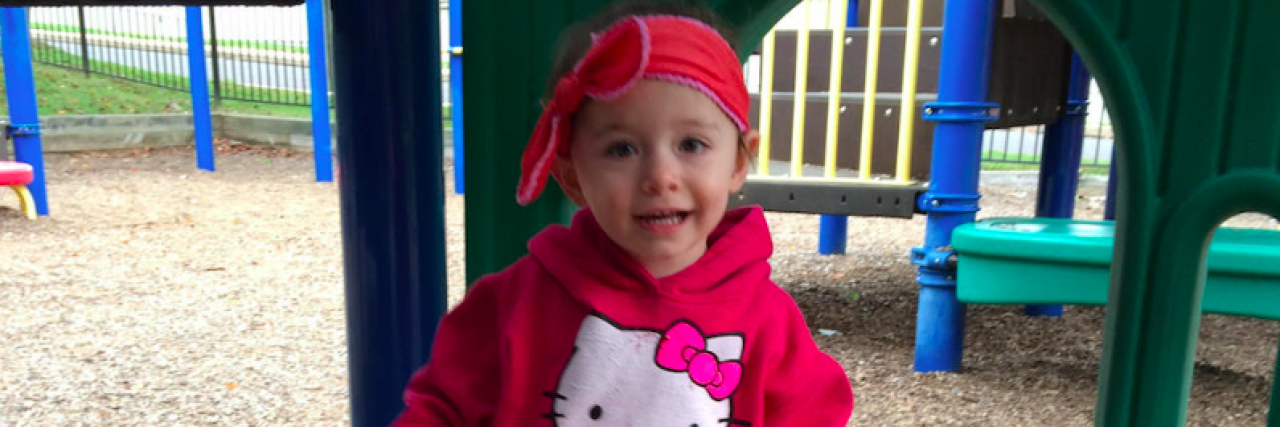As a first time mother, raising a child is all new, no matter how much research I’ve done. Throw epilepsy on top, and it’s a whole new ball game of worry, cautiousness, resourcing, anxiety and depression.
My daughter Aria was diagnosed at 6 weeks old with focal cortical dysplasia in the right hemisphere of her brain, and intractable epilepsy. That day is seared into my memory. It was 5 in the morning, my husband had just gotten home from work an hour before and gone to sleep. I’d warmed a bottle, and like clockwork, Aria woke up for it. She was calm, drinking her bottle, and then all of a sudden she stopped, her head turned left, mouth open, body stiff, and her arms bent up in fists, twitching.
Other relevant stories:
• Does Epilepsy Go Away
• What Are the 12 Types of Seizures
• What to Do When Someone Has a Seizure
It was only five seconds.
She went back to drinking her bottle like nothing happened.
I’d never witnessed a seizure before; all I knew about epilepsy was photosensitivity and gran mals. But I knew something wasn’t right. Panicking, I quickly looked up seizure symptoms on my phone and called a pediatrician who instructed me to take Aria to the hospital immediately.
I had no idea what I was about to take on or where it’d take us. Three out of the first six months of Aria’s life were spent in the hospital. Though she was always happy and not terribly behind developmentally, I still felt like my child was robbed from me, that I didn’t get to see her full potential, that she didn’t get to enjoy every moment to the fullest. Instead, I was stuck torturing her with syringes and “nifty” medicine pacifiers or bottles, just trying to get her to take her medicine morning, noon and night.
Despite three different medications, she quickly escalated to 60-80+ seizures a day, usually in clusters of five 15- 30-second seizures. I quit my job to stay home and take care of her, as daycare had proven to be flop.
I was scared to do the dishes, fearing I’d turn around, and the next second she’d be having a seizure. They didn’t limit themselves to daylight hours. I was afraid to sleep, fearing she’d start clustering and I wouldn’t wake up. I’d set my alarm for every five minutes to make sure she was OK.
Epilepsy consumed me; I charted everything, researched medications, causes, treatments, types of seizures, triggers, current studies, in search of an answer to help my baby. I didn’t know how to cope with everything, but I knew there was no time to slow down, no time to stop. I had to learn everything I could about what was happening to Aria, I had to be able to keep up with what the doctors were saying, I had to advocate for my daughter.
I still haven’t stopped — because a lot could happen in 30 seconds.
Over the past two years, Aria has been admitted to the hospital every three to six months for an extended period of time. Five medications and two brain surgeries later, her seizures have reduced to one to two every other night or during naps. Daylight hours have become easier to get house work done in — but a lot could still happen in 30 seconds. Nights are less sleepless, but I find myself staying up to watch her until the wee hours — because a lot could happen in 30 seconds.
It constantly looms over my shoulder. Every twitch, every gesture, every facial expression, every exclamation of excitement or woe comes with, “Are you about to have a seizure?”
A lot could happen in 30 seconds.
Image via contributor

